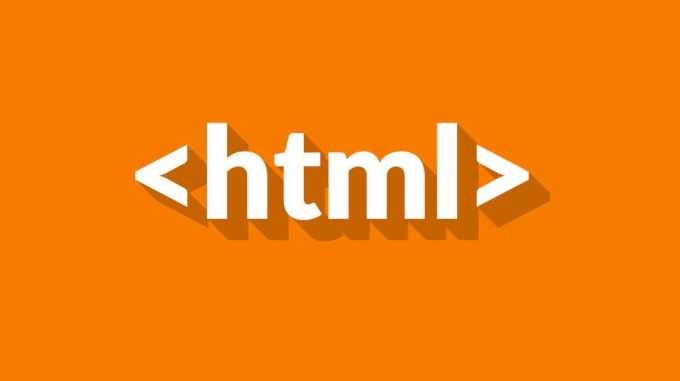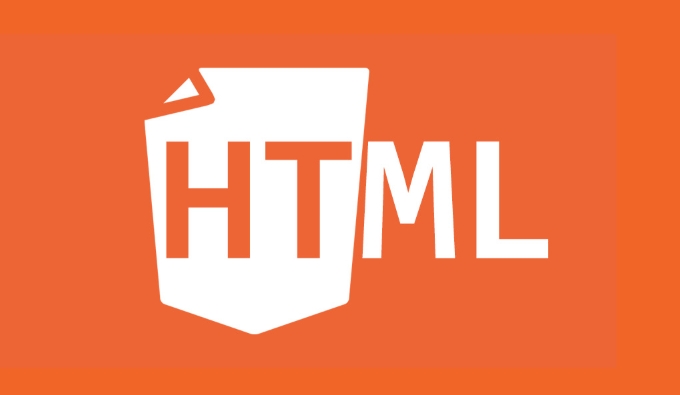 Web Front-end
Web Front-end
 HTML Tutorial
HTML Tutorial
 Implementing Responsive Images with the HTML srcset and sizes Attributes
Implementing Responsive Images with the HTML srcset and sizes Attributes
Implementing Responsive Images with the HTML srcset and sizes Attributes
Jul 12, 2025 am 12:15 AMsrcset and sizes are key properties for HTML implementation of responsive images. srcset provides multiple image sources and their width or pixel density, such as 400w and 800w, and the browser selects the appropriate image accordingly; sizes defines the display width of the image under different screen widths, such as (max-width: 600px) 100vw, 50vw, so that the browser can more accurately match the image size. In actual use, you need to prepare multi-size pictures, clearly named, design layout in accordance with media query, and test the performance of the equipment to avoid ignoring sizes or unit errors, thereby saving bandwidth and improving performance.

When web pages are loading, images often occupy the maximum bandwidth. In order to enable different devices to efficiently load images of the right size, HTML provides srcset and sizes properties to implement responsive images.

What is srcset ?
srcset allows you to provide multiple image sources for your browser and tell it the width or pixel density of those images. In this way, the browser can select the most suitable picture to load according to the screen size and resolution of the current device.

For example:
<img src="/static/imghw/default1.png" data-src="image-400w.jpg" class="lazy"
srcset="image-400w.jpg 400w, image-800w.jpg 800w, image-1200w.jpg 1200w"
alt="Example Picture"> In the above code, the browser will select a suitable image file from the srcset list based on the available space and device pixel ratio.

Key points:
- Each image is followed by its width (ends with
w), such as400w - The browser makes judgments based on the viewport size, scaling ratio and other factors
What is the function of sizes ?
Although srcset provides multiple images, the browser does not know how big the image will appear on the page. At this time, sizes are needed to tell the browser: "How wide should this image be displayed under different screen widths."
For example:
<img src="/static/imghw/default1.png" data-src="image-400w.jpg" class="lazy"
srcset="image-400w.jpg 400w, image-800w.jpg 800w, image-1200w.jpg 1200w"
sizes="(max-width: 600px) 100vw, 50vw"
alt="Example Picture"> The meaning of this line sizes is:
- If the screen width is less than or equal to 600px, the image will fill the entire viewport width (100vw)
- Otherwise, the image takes up half of the viewport width (50vw)
Benefits of using in combination with srcset :
- The browser can more accurately select the "just right" image size
- Avoid loading of images that are too large or too small, saving bandwidth and improving performance
Suggestions in actual use
To better utilize these two properties, you can follow the following practical suggestions:
- Prepare pictures of multiple sizes : It is recommended to generate 3 to 4 versions of common widths (such as 400px, 800px, 1200px)
- Clear naming : For example, use
-400w.jpgand-800w.jpgto mark the image width - Design layout in conjunction with media query : Ensure that the breakpoints in
sizesare consistent with CSS media query - Test the performance of different devices : Chrome DevTools can be used to simulate different devices to see which picture is loaded
If you use CMS or static website generators, many support automatically generating srcset and pictures of different sizes, which can save you the hassle of manual processing.
Don't ignore small details
Some developers only write srcset but ignore sizes , so that the browser can only roughly judge the image size based on the viewport width, which may lead to the wrong image selection. Especially when the picture is not full screen width, adding sizes can truly give full play to the responsive advantage.
Another easy place to make mistakes is that the unit writes incorrectly, such as writing w as px or missing w , which will cause the browser to fail to parse correctly.
Basically that's it. The rational use of srcset and sizes can not only improve the loading speed, but also improve the browsing experience of mobile users.
The above is the detailed content of Implementing Responsive Images with the HTML srcset and sizes Attributes. For more information, please follow other related articles on the PHP Chinese website!

Hot AI Tools

Undress AI Tool
Undress images for free

Undresser.AI Undress
AI-powered app for creating realistic nude photos

AI Clothes Remover
Online AI tool for removing clothes from photos.

Clothoff.io
AI clothes remover

Video Face Swap
Swap faces in any video effortlessly with our completely free AI face swap tool!

Hot Article

Hot Tools

Notepad++7.3.1
Easy-to-use and free code editor

SublimeText3 Chinese version
Chinese version, very easy to use

Zend Studio 13.0.1
Powerful PHP integrated development environment

Dreamweaver CS6
Visual web development tools

SublimeText3 Mac version
God-level code editing software (SublimeText3)

Hot Topics
 How do I minimize the size of HTML files?
Jun 24, 2025 am 12:53 AM
How do I minimize the size of HTML files?
Jun 24, 2025 am 12:53 AM
To reduce the size of HTML files, you need to clean up redundant code, compress content, and optimize structure. 1. Delete unused tags, comments and extra blanks to reduce volume; 2. Move inline CSS and JavaScript to external files and merge multiple scripts or style blocks; 3. Simplify label syntax without affecting parsing, such as omitting optional closed tags or using short attributes; 4. After cleaning, enable server-side compression technologies such as Gzip or Brotli to further reduce the transmission volume. These steps can significantly improve page loading performance without sacrificing functionality.
 How has HTML evolved over time, and what are the key milestones in its history?
Jun 24, 2025 am 12:54 AM
How has HTML evolved over time, and what are the key milestones in its history?
Jun 24, 2025 am 12:54 AM
HTMLhasevolvedsignificantlysinceitscreationtomeetthegrowingdemandsofwebdevelopersandusers.Initiallyasimplemarkuplanguageforsharingdocuments,ithasundergonemajorupdates,includingHTML2.0,whichintroducedforms;HTML3.x,whichaddedvisualenhancementsandlayout
 How do I use the element to represent the footer of a document or section?
Jun 25, 2025 am 12:57 AM
How do I use the element to represent the footer of a document or section?
Jun 25, 2025 am 12:57 AM
It is a semantic tag used in HTML5 to define the bottom of the page or content block, usually including copyright information, contact information or navigation links; it can be placed at the bottom of the page or nested in, etc. tags as the end of the block; when using it, you should pay attention to avoid repeated abuse and irrelevant content.
 How do I use the tabindex attribute to control the tab order of elements?
Jun 24, 2025 am 12:56 AM
How do I use the tabindex attribute to control the tab order of elements?
Jun 24, 2025 am 12:56 AM
ThetabindexattributecontrolshowelementsreceivefocusviatheTabkey,withthreemainvalues:tabindex="0"addsanelementtothenaturaltaborder,tabindex="-1"allowsprogrammaticfocusonly,andtabindex="n"(positivenumber)setsacustomtabbing
 What is the declaration, and what does it do?
Jun 24, 2025 am 12:57 AM
What is the declaration, and what does it do?
Jun 24, 2025 am 12:57 AM
Adeclarationisaformalstatementthatsomethingistrue,official,orrequired,usedtoclearlydefineorannounceanintent,fact,orrule.Itplaysakeyroleinprogrammingbydefiningvariablesandfunctions,inlegalcontextsbyreportingfactsunderoath,andindailylifebymakingintenti
 How do I use the and elements to provide a caption for an image?
Jun 24, 2025 am 12:45 AM
How do I use the and elements to provide a caption for an image?
Jun 24, 2025 am 12:45 AM
The standard way to add titles to images in HTML is to use and elements. 1. The basic usage is to wrap the image in the tag and add a title inside it, for example: this is the title of the image; 2. The reasons for using these two tags include clear semantics, convenient style control, and strong accessibility, which helps the browser, crawler and screen readers to understand the content structure; 3. Notes include that it can be placed up and down but needs to maintain logical order, cannot replace the alt attribute, and can contain multiple media elements to form a whole unit.
 What is the loading='lazy' one of the html attributes and how does it improve page performance?
Jul 01, 2025 am 01:33 AM
What is the loading='lazy' one of the html attributes and how does it improve page performance?
Jul 01, 2025 am 01:33 AM
loading="lazy" is an HTML attribute for and which enables the browser's native lazy loading function to improve page performance. 1. It delays loading non-first-screen resources, reduces initial loading time, saves bandwidth and server requests; 2. It is suitable for large amounts of pictures or embedded content in long pages; 3. It is not suitable for first-screen images, small icons, or lazy loading using JavaScript; 4. It is necessary to cooperate with optimization measures such as setting sizes and compressing files to avoid layout offsets and ensure compatibility. When using it, you should test the scrolling experience and weigh the user experience.
 How do I make HTML content accessible to users with disabilities?
Jun 23, 2025 am 12:52 AM
How do I make HTML content accessible to users with disabilities?
Jun 23, 2025 am 12:52 AM
TomakeHTMLcontentaccessible,usesemanticHTMLtags,providetextalternativesfornon-textcontent,ensurekeyboardnavigationworkssmoothly,anddesignwithsufficientcontrastandresizabletext.Startbyusingsemanticelementslike,,andtodefinepagestructureandavoidgenerico





